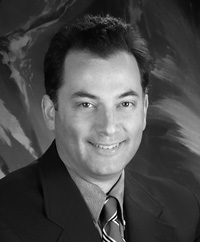Rochester, N.Y., and I parted ways nearly 30 years ago, and not on good terms.
In a rented brown Chevy Citation, dorm-mate Phil and I offered a salty salute as we passed the University of Rochester campus on our way out of town.
I had never been back to Rochester after freshman year in 1985-86, after which I transferred to the University of Missouri. I hadn’t returned, that is, until recently, when I made a solo trip to reconcile my past grievances.
Phil and I were among several students just on our floor of the four-wing Susan B. Anthony Residence Hall who determined by Thanksgiving that we were leaving. That left a lot of time for bad attitudes to fester, many opportunities to be thankful that we were getting out of there.
In my defense, I really didn’t know what I was getting into. I enrolled at the university without ever having been there, basing my decision on a promotional catalog and cassette tape.

Susan B. Anthony Residence Hall, named for the suffragette who in 1900 persuaded the University of Rochester to admit women.
I opted into a package of classes under the banner, I recall, of something like “foundations of Western civilization.” To wit, the reading list included Thucydides’ “The History of the Peloponnesian War.” A real page-turner, that.
I intended to major in political science, but my interest in the retail side of politics was overwhelmed by the scientific approach at Rochester.
I could have changed classes (and should have). However, I could do little about the fact that Rochester wasn’t a traditional college town. Being underage and without cars, my friends and I may as well have been on an island as on the River Campus.
So I transferred to Missouri and majored in journalism.
Identity crisis
If I was unsettled during that time, so was the University of Rochester. Specifically, it was an identity crisis over the school’s name and how that added or detracted from public perceptions. For instance, was the university a public or private school? (It is private).
A consultant, according to the student newspaper, concluded: “Intensive investigation is beginning to reveal the name of the institute is a fundamental reason for the unclear image of the University. If this is the case, a decision must be made regarding the University’s name.”
The consultant also “said that schools named after cities fail to convey the prestige that should be associated with a private university.”
My roommate, Tony, and I were stopped by a TV news crew one cold Saturday afternoon that winter and asked our opinions. I didn’t betray my intention to transfer, but I told the female reporter that the University of Rochester should remain.
I only saw my Rochester friends – the ones from the Boston area – once after I transferred, for a Red Sox game in summer 1987. I exchanged email earlier this year with John, another hall-mate who transferred and who now is an attorney in Philadelphia.
They were good friends for the eight months that I was around them. My issue was with Rochester, the university and the city. But surely they had changed just as I had in three decades.
I hit the road to find out.
Part Two coming Aug. 24, 2015.



